#jack + dorothy baum
Explore tagged Tumblr posts
Text
Jack + child of destiny
Hold the phone. Jack Kline IS LIKE Dorothy Baum in SPN 9x04

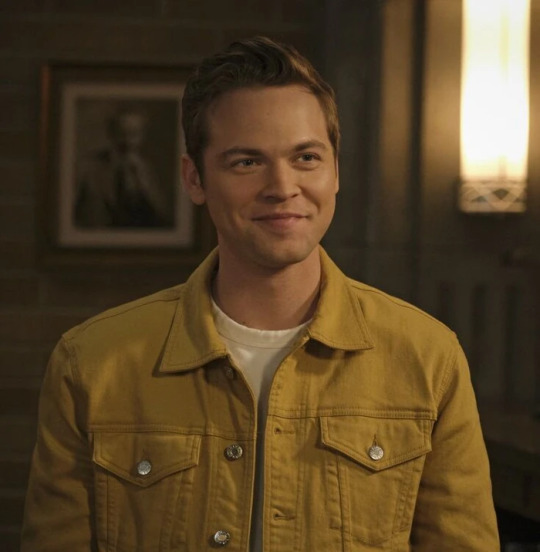
image by FTWinchester & Jechiro
DOROTHY: I met up with these three freedom fighters, and they thought I was this child of destiny chosen to kill the Wicked Witch. They protected me, and then the witch turned them into -- CHARLIE: A scarecrow, a tin man, and a lion? DOROTHY: And then she hunted me down and killed me. CHARLIE: Yeah, that never made it to the books. DOROTHY: Sometimes real life is darker than fiction.
///
CROWLEY (to SAM & DEAN): Wow. If it isn't the Scarecrow and the Tin Man.
SPN 9x04, Slumber Party
Of note, the Wicked Witch and Dorothy are bound, soul to soul. Like Jack & Chuck, perhaps? Or even triparted, like Jack & Amara & Chuck.
DOROTHY: A binding spell that came at a price -- her soul with mine. SAM: So you've been frozen with the witch for all this time? DOROTHY: Yes. Look, the witch cannot be killed. If I am awake, then so is she.
SPN 9x04, Slumber Party
#spn 9x04#spn scripts#spn transcripts#spn slumber party#sam & dean & crowley#dean + the tin man#sam + the scarecrow#jack + dorothy baum#spn + the wizard of oz#tfw key traits#tfw + hom#spn charlie#charlie bradbury#charlie & dorothy#cas + the cowardly lion#angels + lion-coded beasts#jack + lion#jack & amara & chuck#chuck won theory#jack & chuck#sam & dean + the smart choice and the heart choice
26 notes
·
View notes
Text
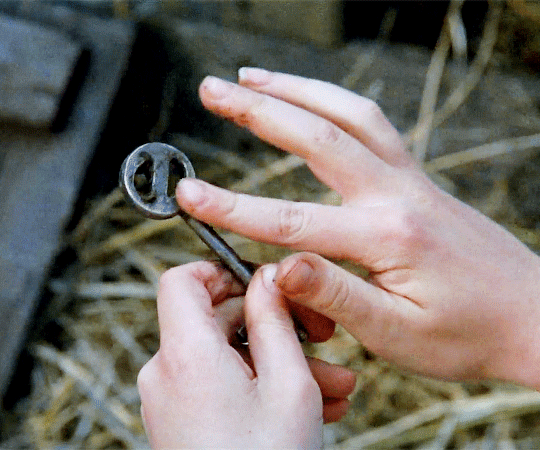


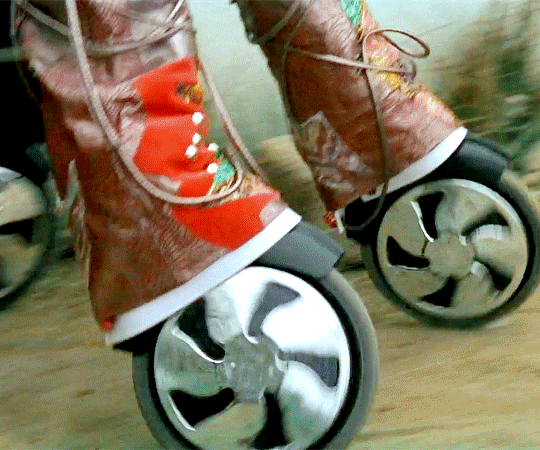
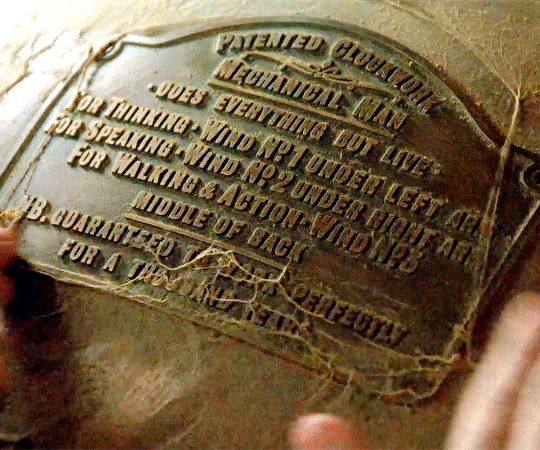

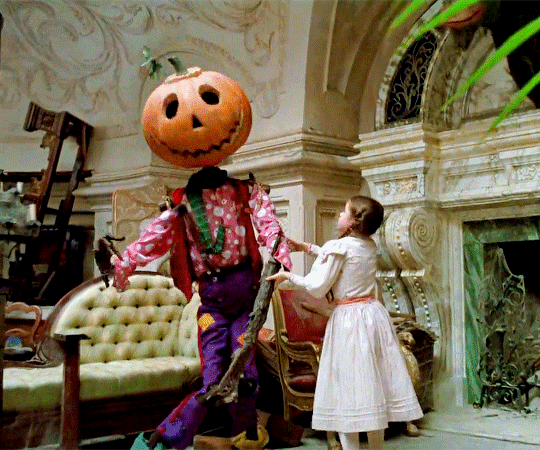

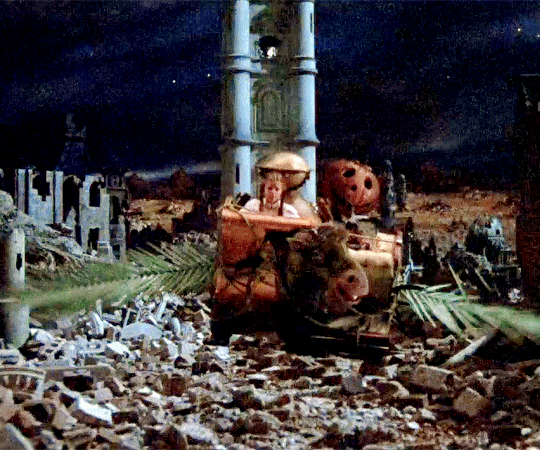


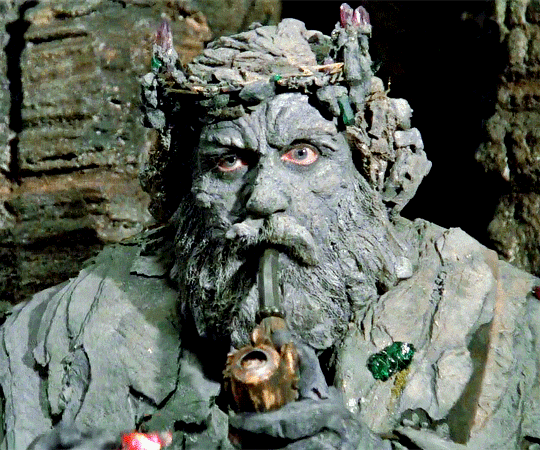

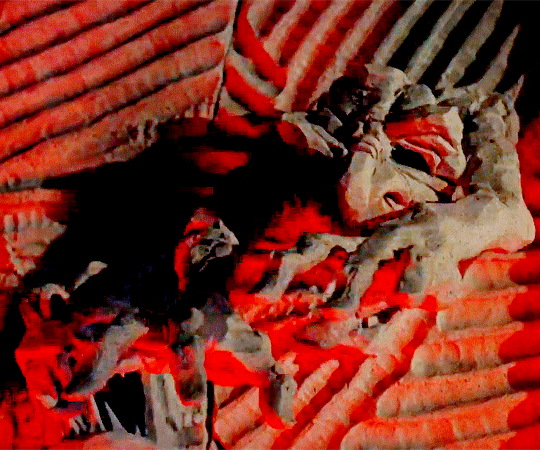
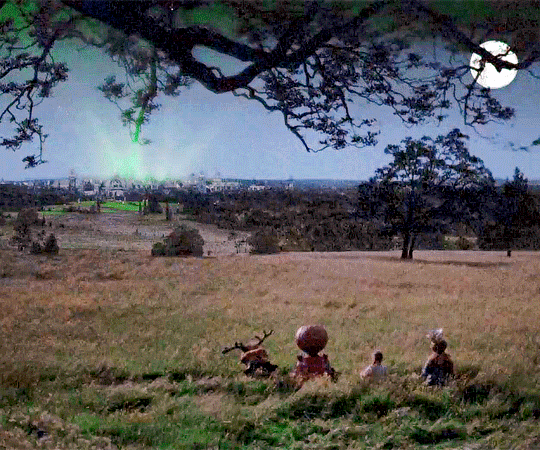


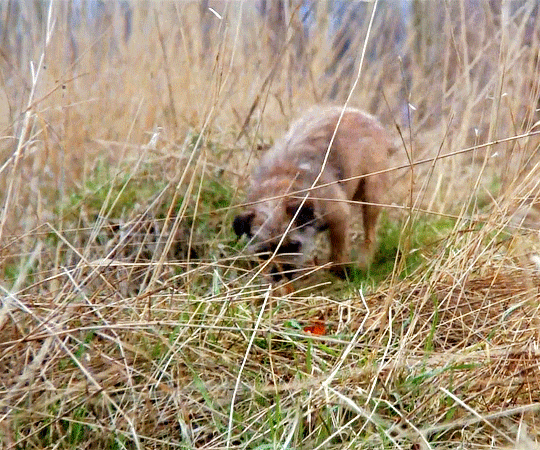
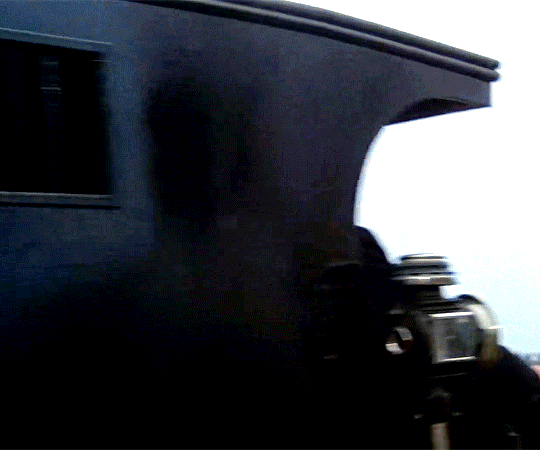

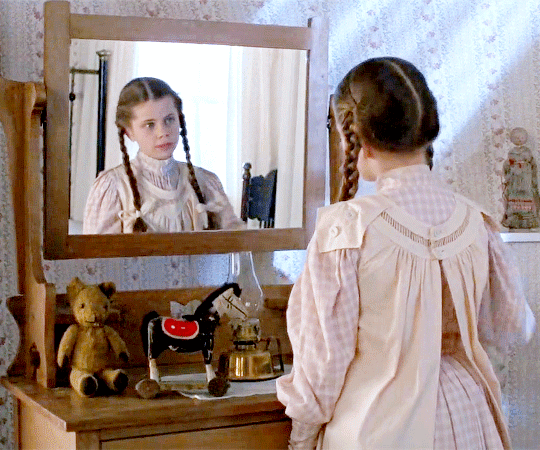
RETURN TO OZ | 1985 ↳ Directed by Walter Murch
#return to oz#dorothy gale#fairuza balk#mombi#the nome king#jack pumpkinhead#ozma of oz#horroredit#userbbelcher#userstream#chewieblog#filmtv#cinemapix#fyeahmovies#moviegifs#filmedit#filmgifs#dailyflicks#dailytvfilmgifs#throwbackblr#1985#*mine#i actually made over 60 gifs cuz i couldn't pick my faves. there will be more sets sorry not sorry#did u know that l. frank baum also wrote this screenplay?? amazing to me. it really is a horror story.#(its also a love story but thats neither here nor there)#trauma for an entire generation <3
1K notes
·
View notes
Text
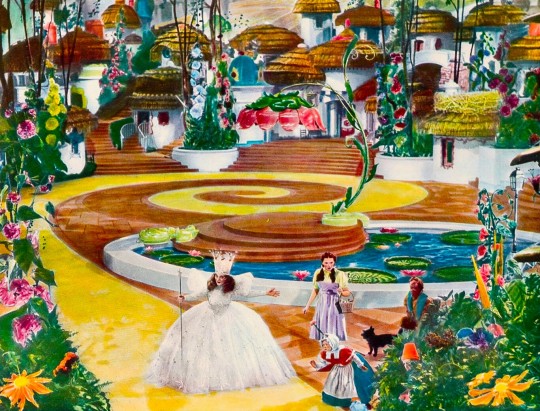
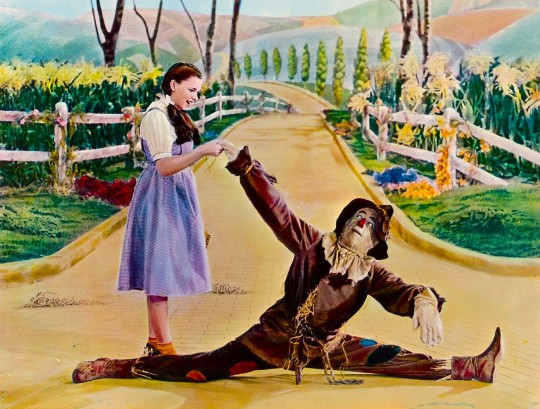
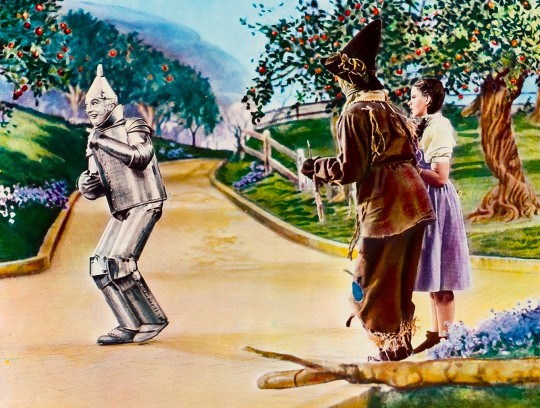

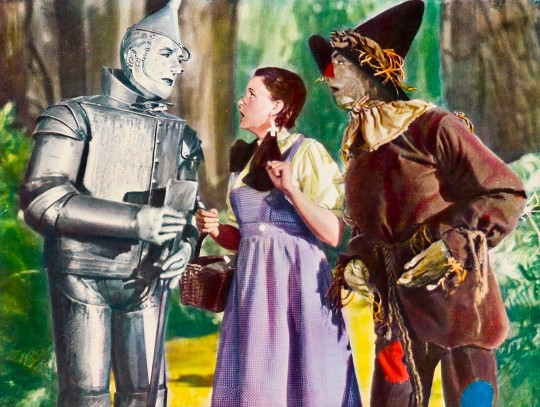
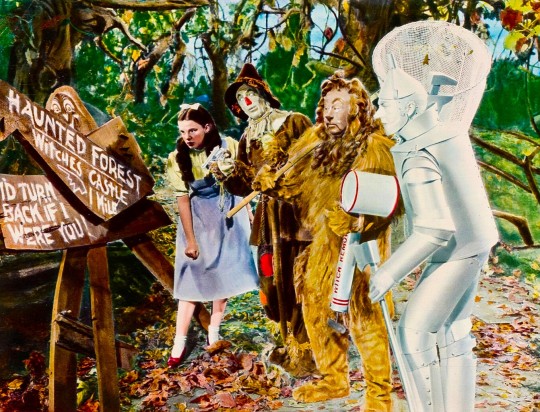


The Wizard of Oz lobby cards (1939)
#the wizard of oz#vintage lobby cards#30s fantasy movies#victor fleming#judy garland#jack haley#bert lahr#ray bolger#margaret hamilton#dorothy gale#the scarecrow#the tin man#the cowardly lion#30s musicals#l. frank baum#1930s#1939
712 notes
·
View notes
Text
Anyone know of some good adaptations of The Wonderful Wizard of Oz that's more tied to the Book than the movie? I love the movie but am loving the books right now.

#wizard of oz#wonderful wizard of oz#l frank baum#dorothy gale#Scarecrow#Tin Woodsman#Tin Man#Lion#Cowardly Lion#jack pumpkinhead
33 notes
·
View notes
Text
just started to do my final art project of the year and of course is something related to wizard of oz hehe

#wizard of oz#oz books#princess ozma#ozma#dorothy#dorothy gale#scarecrow#jack pumpkinhead#tin woodman#cowardly lion#glinda#glinda the good#l frank baum#fanart#flying monkeys#friends of dorothy#the patchwork girl of oz#scraps the patchwork girl
40 notes
·
View notes
Text
I got a new sketch book in hop it can handle my ink, good news it absolutely did and I kinda like it's texture more than your average sketch book 🙂👍
So what did I draw to try that out

Princess Dorothy 🙂 of course daaah what else do I draw lol
Also her son Jack

Jack turned out amazing I'm in love with him
So yeah worth it purchase 😁
#my art#art#traditional art#oz#marvelous land of oz#l frank baum#jack pumpkinhead#dorothy#dorothy gale
14 notes
·
View notes
Text
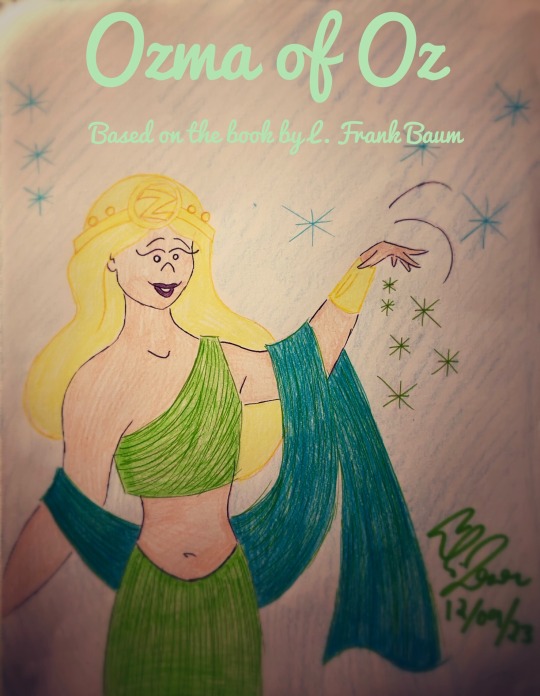
🌟⭐️ Princess Ozma ✨✨🎄
#Ozma of Oz#Princess Ozma#Queen Ozma#character design#character study#late night drawing#human-fairy hybrid#Oz#Emerald City#Ozma#Marvelous Land of Oz#Jack Pumpkinhead#Dorothy Gale#Mombi#Christmas magic#L Frank Baum
4 notes
·
View notes
Text

"What is this, a man or a melon?" Fairuza Balk as L. Frank Baum's come-to-life Dorothy Gale in "Return To Oz." She very believably interacts with a series of special effects and even animal players, the homunculus Jack Pumpkinhead as her adopted son in particular.
120 notes
·
View notes
Text
Rewatch: Return to Oz (1985)

I've been on a bit of an Oz kick recently, revisiting the original Baum books and of course anticipating Wicked coming out later this year (which I'm managing expectations for to avoid disappointment).
Return to Oz was a staple (and nightmare fuel) for many a millennial childhood, at the tail end of the "dark fantasy" era popularised by The Neverending Story and The Dark Crystal, the antithesis of the Technicolour, musical world of MGM's The Wizard of Oz - a dystopian future that reflects the fracturing of Dorothy's mind and her inability to reconcile the trauma of her previous Kansas-Oz journey.
Return lives in a sort of mirror world to the 1939 film, taking elements such as the ruby slippers (for which Disney had to pay MGM a hefty fee), but returning to the original illustrations for the character designs, and drawing inspiration from Baum's novels but not explicitly adapting them. It also returns Dorothy to a child rather than Garland's quasi-teenager, which is important as I feel Baum (an advocate of women's suffrage) had a keen interest in the empowerment of girls as the heroes of their own stories.

To evoke that other turn of the century fantasy classic, Dorothy is to early modern American folklore as Alice is to English, and if The Wizard of Oz is Wonderland, Return to Oz is Through the Looking Glass. In fact Return relies heavily on the mirror motif, not only literally, in the mirror that entraps Ozma, but Ozma herself as a mirror to Dorothy. Return also takes the Kansas/Oz dichotomy from the film in reflecting people Dorothy knows in Kansas to characters of Oz (a concept not found in the books), but while in Wizard it’s Dorothy’s trio of friends that are personified in the Scarecrow, Tinman, and Cowardly Lion, in Return it is her trio of antagonists from Kansas who appear in Oz - the Dr Worley/The Nome King, Nurse Wilson/Mombi, and the Orderly/Wheeler.
Her Oz friends in Return are instead pulled from inanimate objects - Ozma gives her a pumpkin that personifies in Jack Pumpkinhead, Tik-Tok resembles the "Electrical Therapy" machine with the face, and the gump...well, I guess they forgot about that one.
But I'm getting ahead of myself.

Fairuza Balk was just 11 but has a compelling screen presence - her Dorothy is troubled and serious, befitting the overall darker tone of the film. While she would go on to embody "witchy" energy in later roles, here there's a world-weariness yet innate strength to her Dorothy.
Aunt Em helpfully tells us it's been six months since the tornado and Dorothy can't sleep. Her body may be back in Kansas, but her mind remains in Oz.
The film doesn't really pick a lane between the "it was all a dream" of the 1939 film and the "Oz is an actual place" of the books, leaving it for the viewer to decide. We are told the old house was "lost" but that can suit either interpretation, same with the OZ key being either delivered by shooting star or the key to the old house (as Em posits). Dorothy's inability to sleep is either unresolved trauma from the tornado, or longing to return to her friends in Oz and/or sensing that there is trouble in Oz.

I'm much more sympathetic to Em as an adult - she has a husband unable or unwilling to finish building the new house, Dorothy won't stop rabbiting on about nonsense rather than helping with chores, and she has to borrow money from her sister to pay for medical treatment to try and cure Dorothy's insomnia.
Justice for Aunt Em! Played with grace by three-time Oscar nominee Piper Laurie (for The Hustler, Carrie, and Children of a Lesser God respectively).
Poor Toto doesn't get to come on this adventure, but hey, he's still around, guess Mrs Gulch didn't make good on her threat to have him destroyed (or she died in the tornado, which is probably likely given the Witch's fate).

Just a guy patronizing a child that the machine intended to surge electricity through her brain is perfectly safe because it has a face.
But there is a face in the machine - Ozma, stuck in the glass.
Nicol Williamson is our villain, with a fantastic voice. Mostly known for theatre and Shakespeare, you may remember him as Merlin from that other dark fantasy classic Excalibur, or as Little John from Robin and Marian.

Jean Marsh is our witch, complete with black gown and pointed sleeves - to continue our fantasy bingo she was Queen Bavmorda in Willow (which I've actually never seen) and Rose in the original Upstairs Downstairs (which I've never seen either). She'll always be creepy Mombi to me.
We see Ozma in the glass again before she appears in Dorothy's room, ethereal barefoot child gifting her a carved pumpkin because "it's Halloween soon". Okay, whatever you have to do to get there.
On that note, the screenplay was written by Gill Dennis (who would go on to co-write Walk the Line) and Walter Murch, who also directed. Murch was film school friends with George Lucas, and they wrote THX-1138 together - Lucas has a "special thanks" credit on this film. Murch worked steadily in sound design and editing (nominated for 10 Oscars with 4 wins), but after Return was a box office failure he never directed another film, which is a real shame.

Dorothy "combs" the pumpkins hair, which I find very charming.
The growing tension of Dorothy's isolation, being strapped to the gurney, the squeaking wheels, the far-off screaming: this is a horror film for children.
My sister and I used to re-create Ozma and Dorothy's escape on our grandmother's porch all the time.
Because we’re in a mirror, the streaming river of Kansas becomes the deadly desert of Oz - water, of course, also being a mirror and common pathway/doorway between worlds.

Billina the hen also appears, because Dorothy needs an animal companion, who can now talk because she is in Oz. The question is whether Toto could also talk, as all animals can in Oz, and simply chose not to (iirc in the books he didn't because he could "make himself understood" without words or something). The chicken puppetry is really quite good, I'll always prefer puppets/animatronics over cgi.
The voice of Billina is provided by Denise Bryer, who was the "junk lady" in Labyrinth (have we got that bingo yet?).
Another reflection - the packed lunch that was taken from Dorothy at the sanitarium in Kansas is returned to her in the form of a lunch pail tree in Oz, which leans towards the reading that Oz is a projection of Dorothy's mind as a way to cope and resolve/repair the traumas of her Kansas life.

Dorothy comes across her old house that is seemingly not in Munchkinland, the broken remains of the yellow brick road nearby. How much time has passed in Oz? Since everyone was turned to stone it could be hundreds of years and we're in a Narnia situation - at least long enough for a forest to grow where there once was a munchkin town square.
Glinda is conspicuous by her absence - probably because the plot couldn't happen if she was around.
Also absent are any stone munchkins which has very dark implications - the Emerald City still has ruins and stone inhabitants, but Munchkinland has been completely obliterated.
lol, Dorothy runs to the Emerald City in literally minutes, a journey that previously took half a film.

Sleep well, kids!
If we go with the interpretation that Oz is a manifestation of Dorothy's mind (maladaptive daydreaming?), it is interesting how she projects people and objects from her real life into her fantasy life - obviously her threats in the sanitarium become the villains, but the Electric Shock machine becomes Tik-Tok, her erstwhile protector. In this, she transforms a threat into an ally, and yet much is made that he isn't, and cannot be, "alive."
Many of the elements of this film - Billina, the Wheelers, Tik-Tok, the Nome King, and the princess with a hundred heads - came from Ozma of Oz, while Ozma herself, Jack Pumpkinhead, and the witch Mombi (combined in this film with Princess Langwidere) originate in the earlier The Marvellous Land of Oz, with a different backstory.

Oh to be a wicked witch, playing a mandolin, in a gilded, mirrored palace.
I enjoy this costume! Reflective of the high structured sleeves of nurse but sharp to emphasise the danger Mombi poses, and with the same mechanical accents/coloiur scheme as the Wheelers
Those cabinets full of heads are still so creepy. The way they watch Dorothy - are they alive and aware the whole time? Horrifying.
Jack Pumpkinhead was voiced by a young Brian Henson (who also acted as puppeteer).
I always used to fast-forward the scene where Dorothy steals the key and gets chased by headless Mombi as a kid, it was just too tense.

I mean maybe this isn't scary to kids today, but it sure freaked the fuck out of me. Especially with all of those heads screaming in their cabinets.
But how exactly was zombie Mombi snoring without a head?
Interesting that the cabinet with Mombi's original head is the only one without transparent glass, but instead has a mirror. Her original head is also kept in cabinet 31, which was Dorothy's room in the sanitarium. As a kid I was always dead set that Oz was real and Dorothy really went there, but now I'm leaning more towards Oz as a manifestation, or at least a world directly influenced and constantly adapting based on Dorothy's experiences. Was she unable to sleep in Kansas because she knew Oz was in trouble, or was Oz in trouble because of her mental discord?
"If his brain's run down, how can he talk?" "It happens to people all the time Jack!" is a nice callback to "Some people without brains do an awful lot of talking don't they?"

In which we strain the metaphor.
But all these mirrors also serve a story purpose as well as a metaphorical one - the mirror world is where Mombi has trapped Ozma, so she can look on every surface and see her victory. The mirror is also a connection with the real world, and how Ozma can reach Dorothy and draw her back to Oz. Mirrors are reflections, but they are also doorways, as we see in this very scene as Ozma directs Dorothy to the right passage to get back up to the tower.
We also get another Dorothy/Ozma parallel, in which she becomes a surrogate mother to Jack in place of Ozma, his creator.
There's almost some social commentary in the Nome King's grievances: "All the previous stones in the world are made here in my underground dominions...so imagine how I feel when someone from the world above digs down and steals my treasures? All those emeralds in the Emerald City really belong to me. I was just taking back what was mine to begin with." But of course he didn't just take back the emeralds, he turned the populace to stone or into inanimate objects so that does undercut his point a bit.

Her descent visually recalls (deliberate or not) Alice's fall down the rabbit hole in Wonderland. The VFX are pretty rough though.
Dorothy points out that he has so much, implying perhaps he could share, and the Nome King retorts "that's not the point." It is the point in later books, where under Ozma's leadership the Emerald City is essentially a utopian communal living society.
She also points out that the Scarecrow didn't take the emeralds rather they were there when he was made king, but the film is uninterested in exploring the culpability around generational wealth and repatriation of cultural property.
But it's interesting how much the Oz story revolves around powerful objects and theft and/or appropriation of them. Glinda steals the Witch of the East's ruby slippers and gives them to Dorothy, who then steals the Witch of the West's broom to give to the Wizard, Mombi steals Ozma, someone stole the emeralds from the Nome King, who steals them back, Mombi steals heads, Dorothy steals the Powder of Life, etc etc
At this point the Nome King is merely a face in the stone, but when he comforts Dorothy he starts to takes a more humanoid rock form, with a hand to reach out to her.
Is his sympathy genuine or feigned? I'm going with the latter, since he manipulates her into playing the "guessing game" to try and get the Scarecrow back.

Worst production of Starlight Express ever.
When I was a kid I always wanted to try the limestone pie and hot silver drink, but now it looks super gross.
The Gump chose…poorly.
The Nome King making points again - Dorothy and co didn't ask what would happen if they got it wrong, even Tik-Tok only brings it up after the Gump has already gone in. But they press on in order of most expendable, Jack (with Billina hiding in his head) and then Tik-Tok.
As each get turned into ornaments, we see the Nome King become more and more humanised in his rock form - a nice subtle indication that his motives aren't purely spite and he gains power from turning living (or living-adjacent) things into inanimate objects, the opposite (mirror) of Dorothy's power in turning inanimate objects into living things in the journey from Kansas to Oz. If Dorothy had chosen wrong too, he says he would have become completely human - would he have been able to access the path to the human world? Was his goal to eliminate Oz, the fantasy world, in favour of the human world, much like Worley was obsessed with harnessing electricity and the "modern" world?

It's revealed that Chekhov's ruby slippers that Dorothy earlier told Dr Worley had fallen off on her way back to Kansas the first time were found by the Nome King, and their power enabled him to conquer the Emerald City.
It's unclear whether the rubies were first mined from the Nome King's caverns, but Dorothy really can't complain given the shoes were magicked off the feet of a dead woman and onto her own.
I'm actually surprised that they kept the ruby slippers in given the license fee they had to pay, since nothing really turns on their inclusion, other than the Nome King's offer to send her home with them, allowing Dorothy the choice between her own safety and the lives of her friends, of course the parallel to Worley offering the ECT to wipe her mind of Oz. I do like the callback, but it didn't need to be the ruby slippers rather than some other power the Nome King had.

Hee, the Nome King's little stone feet kicking out of his stone robe with the ruby slippers is so camp.
It is interesting through to think about the chain of events - Dorothy, eager to get back home, lets go of the ruby slippers, they fall into the Nome King's hands, he uses them to conquer Oz and install Mombi, who has imprisoned Ozma in the mirror (at some point long in the past). The fracturing of Oz influences Dorothy's mental state which drives her to Worley, where Ozma is able to contact her through the mirror world and bring her back to Oz, depose the Nome King/Mombi, and restore Ozma to her throne. It's quite neat writing.
There's an interesting green/red dichotomy - red seems to represent the witch's power, the ruby slippers that originally belonged to the Witch of the East, Mombi's ruby key, fire/red smoke being used by the Witch of the West, and even pink was the colour associated with Glinda in the 1939 film, while green represents Oz in the ornaments they turn into, the Emerald City, the Gump is green, etc. Both rubies and emeralds are present in the Nome King's costuming, perhaps indicating that the raw items did come from his dominions.

When Dorothy chooses correctly, the Nome King reverts to his claymation rock form, and the room turns red. I don't think it's explicitly green=good and red=bad (the Witch of the West had green screen after all), but both are associated with power.
I always used to fast forward this sequence as well. The Nomes coming out of the walls? *shudder*
The Nome King, felled by a classic egg poisoning.
Dorothy liberates the ruby slippers from another dead body, lol.
At the celebration in Oz, the costuming does lean heavily into either red or green - so maybe that was just standard complementary colour palette and I'm reading too much into things.
We get a nice long pan over the mirrored ceiling of the parade, just to really hit the point home.
Oh hey, the Wheelers are here too! All is forgiven I guess? Except Mombi, she gets to be paraded about in her cage by the woman whose heads she stole. Hey, at least she's able to smirk about her villainy.

Dorothy turns down queenship of Oz but wishes she "could be in both places at the same time" - the ruby slippers grant her wish and Ozma is released from the mirror.
Ozma's backstory: "Her father was king of Oz before the Wizard came. Ozma grew up as Mombi's slave, but when the Nome King promised Mombi thirty beautiful heads if she kept Ozma a secret, she enchanted her into the mirror." The first part is the much the same in the book, although there we get some interesting gender-bending stuff where Mombi transforms her into a boy name Tip and she doesn't discover her true nature until much later.
Dorothy gives Ozma the ruby slippers, combining the power of green and red (I'm just going with it now), therefore healing the kingdom of Oz from the discord first created when the Wizard arrived (in the book he was the one who gave baby Ozma to Mombi), and drawing Ozma's real world counterpart Dorothy to fix it by deposing the Wicked Witches and then the Nome King. But with Ozma returned, there is no need for Dorothy to remain in Oz, the two sides of herself are split and no longer warring inside her.

Billina however remains, to be Ozma's animal counterpart to Dorothy's Toto.
As a kid I coveted this gown, and I still kind of dig the headdress. Well, the OZ circlet anyway.
I also acted out the pulling Ozma from the mirror scene many times.
Although kind of a bitch move on Ozma's part to send Dorothy back before she could give her proper goodbyes. It's like, off you pop, thanks for freeing me but this is my kingdom now.
Dorothy wakes up beside the river (with a close up of a reflective pool of water/Dorothy's eye), and again, this could either be her actually returned by Ozma, or her simply waking from her delirium.
But the real world counterparts have met the same fate as their Oz reflections - Worley died in the fire and Wilson is carried off in a police cart.
Henry, after the shock of almost losing Dorothy, is motivated to finish building the house, and Dorothy is able to look back fondly at Oz through her reflection, but has learned to keep it a secret and not let it consume her life.

Her trauma is resolved, Oz is at peace; Dorothy and Ozma can live contentedly in parallel, with a connection between both worlds.
This is also a nice callback to the books, where Ozma would check in on Dorothy once a day through her magic mirror to see if she needed her assistance.
Maybe it's just my nostalgia goggles, but this film really holds up for me! Yes the effects are a little dated and it's on the darker side for kid's fare, but overall the story and acting is strong, there's meaty subtext around the importance - but necessary limits - of fantasy as escapism, it unequivocally centers girls/women as the heart of the story with their own agency and harnessing their own power. It's well worth the rewatch.
What do you think? Am I blinded by nostalgia? Reading way too much into a kids movie? Am I just rambling into the void here?
#jlf watches#return to oz#jlf's nostalgia rewatch#the wizard of oz#l frank baum#80's movies#dark fantasy#meta#film analysis#long post
43 notes
·
View notes
Text
What Oz could have been: the 1939 movie
Last time I talked about what Disney's "Oz: The Great and Powerful" would have originally looked like, based on the first version of the script. But today I want to talk about THE big Oz movie, THE classic: the 1939 MGM movie.

Everybody knows this picture, it became iconic and cult, and is such a big part of culture today... Yet, you might be surprised to learn that the movie could have ended up looking VERY different from the one we know today.
Indeed, the "Wizard of Oz" script kept being written and re-written and re-re-written by a dozen of different authors and co-authors, to the point that when it came time to credit who was behind the script problems arose to find an exact name to put on there... If you want to know the detail: a first draft was by William H. Cannon, Mervyn LeRoy's assistant, before the contracts were set and when everything was just beginning. Once the project started, the first full scenario was written by Irving Brecher, but he was then overtaken by another project and replaced by Herman J. Mankiewicz, who worked for one month over the script until a co-author arrived in the form of Ogden Nash. Then a third author joined the team: Noel Langley (he was the one who had the idea of changing the Silver Slippers in Ruby Slippers, and he brought the idea that the three Oz companions would have counterparts as farm helpers in Kansas). HOWEVER Mankiewicz ended up quitting the team. He was replaced by Herbert Fields, who only stayed for three days and didn't change anything, before being also replaced by Samuel Hoffenstein, who also only stayed for a few days without modifying much (or anything). FINALLY Noel Langley gave back the final product of the writers' team... Which of course was edited, rewriten and modified by a second team, formed of Florence Ryerson and Edgar Allan Woolf. They were then brutally moved to another movie, and the script returned into the hands of Noel Langley to be again rewriten and adapted. One month before the movie started Noel Langley was given another co-author, Jack Mintz, and the second "final" scenario was delivered... Before being corrected and modified by a new author recently brought by Victor Fleming, John Lee Mahin. And THEN it was done!
Of the fourteen different authors that worked on the script, only three ended up being given credit in the final picture: Noel Langley, Florence Ryerson, and Edgar Allan Woolf.
The result was a project that varied wildly in production. In fact, while the final movie is still vaguely faithful though a bit loose adaptation of the original novel - the very first drafts of the movie had NOTHING to do with the original novel. The "faithfulness" to Baum's Wizard of Oz can be considered almost an accident as each rewrite got closer to Baum's story, only in an effort to get away from the older script... Anyway, here are some highlights and best-offs of the Oz movie we could have had:

The MGM movie has a lot of deleted scenes and songs, that were recorded but not included in the movie. Hopefully a lot of them were released online and can be easily found on Youtube, or elsewhere on the Internet. Most of them were cool reprises that were cut short for time: for example the song "The Wicked Witch is Dead" had a reprise after the death of the Witch of the West, sung first by the Winkies Guards and then morphing into the song being sung by the Emerald City denizens (fragments of this reprise were still used in trailers for the movie). There is also the very famous "Over the Rainbow" reprise that a scared, crying Dorothy was to sing while trapped in the Witch of the West's castle, before the Witch taunted her with an image of Aunt Em in the crystal ball. The reprise is REALLY touching and Judy Garland really put her best in there. There are also alternate takes which reveal a lot about what the movie was intended to be - for example we have alternate records of the "Lollypop Guild" which shows that the high-pitched voice of the final movie was actually an intent to create a "little boys" voice, to match the little girls of the Lullaby League.
The most famous of all these deleted songs is without a doubt the "Jitterbug" song. It was only cut at the last minute, and this brutal removal leaves bizarre remnants in the final movie (for example the Witch says she "sent a bug" to take care of Dorothy and her friends ; and when the Flying Monkey arrive they look sweating and exhausted). This was because originally the Wicked Witch of the West was supposed to send to the heroic party a magical bug (the titular "Jitterbug") that would have forced them to dance until exhaustion, so the Winged Monkeys could easily pick them up. This was however removed out of fear this would date the movie, and they were very much right... Because the entire pun on which the scene relies does not work anymore today: the "Jitterbug" being a specific style of dance very popular in the 1930s and 1940s, but that stopped existing beyond the 1960s. However the "Jitterbug song" earned enough of a fame to get included into the recent "Tom and Jerry" animated movie of "The Wizard of Oz".
Originally, a child-actress was envisioned for Dorothy, and the first choice was Shirley Temple. She declined (but she would later play the role of Tip/Ozma in a Marvelous Land of Oz production). When Judy Garland was cast, there were attempts at giving her a makeup that would make her look more like a child - but everybody pointed out it made her into a ridiculous "baby doll". The first plans were also to have Dorothy be blond, as she was in later Oz books.

Everybody knows the iconic, creepy look of the Wicked Witch of the West, but did you know she was supposed to be... beautiful? One of the main and biggest inspirations for the MGM movie was the huge success of Disney's Snow-White and the Seven Dwarfs. Since they attempt to recreate it, their original plan for the Wicked Witch of the West was to have her be a beautiful villainess evoking the Evil Queen of Disney. The original actres cast for this "glamorous witch" was Gale Sondergaar, and we still have shots of her in costume. However it was later decided to make the witch into an uglier, more grotesque character evoking a traditional fairytale hag. Mervy LeRoy was the one who wanted to have the "glamorous, sexy" witch but many (among which Arthur Freed) defended the idea that the witch had to be like Disney's old crone, not evil queen... So they decided to recast the role - leading to the arrival of the one of a kind Margaret Hamilton.
Speaking of the Wicked Wich: One of the original plans for the character was to have her be the Oz counterpart of... Aunt Em. Indeed, no Miss Gulch of any kind. Early on, Aunt Em was considered to be a meaner and colder caretaker to Dorothy, and the one who wanted to get rid of Toto - which explains why she became the Wicked Witch of Oz. (This idea was by Langley, the one who also had the idea of making Dorothy's companions into the farm-helps of Kansas) The Wicked Witch also had a son, Bulbo, an ugly and dim-witted man she wanted to make King of Oz, and who was... the counterpart of Uncle Henry. Later, when the character of Miss Gulch was created, she was given a son named Walter to match Bulbo, before the character was scrapped altogether.
The Jitterbug scene was actually a left-over of a much earlier version of the movie which would have put a strong emphasis on the "musical aspect". This version wanted Oz to be under the tyranny of a spoiled brat of a princess that would have outlawed all forms of music that were not classical music and opera ; young and hip Dorothy, however, would have brought the swing and the jazz from the 1930s USA and used it to win over the princess in a singing duel, and becoming a hero in Oz. Who would have played the princess? I had conflicting reports: some say Deanna Durbin (one of the early candidates for playing Dorothy, alongside Shirley Temple) was considered for the role ; others said it would have been Betty Jaynes playing a certan "Princess Betty".

The earliest version of the script we have (created by William H. Cannon) was heavily inspired by the 1925's Wizard of Oz movie (because yes, there were Wizard of Oz movies before the MGM one), and wanted to remove all forms of magic and supernatural from the story. The brainless scarecrow would have been a man so dumb the only job he could find was to scare crows in fields ; the Tin Man was supposed to be a heartless criminal that the law had forced to wear a suit of tin as a punishment, punishment which did encourage him to learn kindness...
Oh yes, everybody noted in the final movie how Dorothy favorizes the Scarecrow above the other companions. This is a remnant of the scenario drafts wher the final scene of the movie would have been the teary farewell of Dorothy to Hunk, as he leaves for agricultural college and she promises him to write him every day - implying a romance between the two...
People might note a bizarre editing during the scene of the companions freeing Dorothy - such as the door being axed down not corresponding to the door the group escapes from. This is due to yet another cut sequence: the door the companions axed down was to be a trap by the Wicked Witch, who was to imitate Dorothy's voice and song to lure the companions. Once she had captured the three friends, she would have used them as baits, forcing them to call out for Dorothy and to encourag her to take a magical "rainbow bridge" that appeared out of nowhere... Except said bridge would have been created by the Wicked Witch's magic, and while the rainbow was solid enough to walk onto for a certan distance, at one point it returned to being just light. The Witch hoped to kill Dorothy by doing this - but didn't count on the Ruby Slippers' magic actually preventing Dorothy from falling through the rainbow.
Before it was decided to have Glinda send snow to kill the cursed poppies, the original concept was that the Tin Man's tears would have awakened Dorothy (an idea that, as people pointed out, was reused in "The Wiz").

There was at one point plans for the Cowardly Lion to actually be just a... a regular lion that tagged along as a sort of pet with the team, and had dubbed lines, to be revealed as "Prince Florizel", a Prince Charming-type of character that had been cursed under the shape of a lion, and would in the end have married his lover, princess Sylvia (this version was one of Noel Langley's, and very influenced by traditional fairytales). This version most notably pushed Dorothy into being a secondary character: it was the Prince/Lion who was to kill the Witch, by somehow cutting her broom so it would fall into pieces while in the air. There was also a dragon the prince was supposed to fight. This version, being Langley's, was the one that included the Witch having a son (see above). In the older versions of this story, the Witch's plan to make Bulbo king of Oz was to have him marry princess Sylvia, heir to the Ozian throne (hence why Florizel's feud with the Witch is personal) ; later it was changed to the Witch planning to attack the Emerald City and dethrone the Wizard with an army of men, wolves and winged monkeys.
When the MGM learned that Disney was working on their own adaptation of the Wizard of Oz back then, there were brief talks of the two studios uniting their efforts to make a half-live-action, half-animated movie.
During the scene where the Wicked Witch threatens the companions at the cottage in the forest, the Witch was supposed to threaten the Tin Man by briefly turning him into a "beehive", aka filling him with bees, and after crushing one of the insects the Tin Man would have cried, causing his jaw to rust and be blocked.
Early on, there were plans to keep Oz as an actual magical place that truly existed - but the movie-makers of the time considered fantasy was not "sophisticated" and "serious" enough for the audiences, and so they added the entire idea of Oz being shown as a dream-world so adults could "buy" the movie.
#what oz could have been#the wizard of oz#1939 wizard of oz#mgm wizard of oz#oz#wizard of oz#deleted scenes#what could have been
51 notes
·
View notes
Text
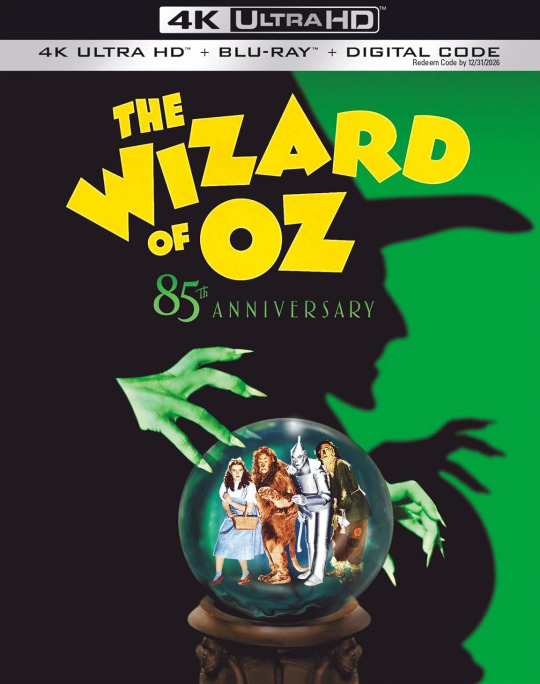
The Wizard of Oz will be released on Steelbook 4K Ultra HD + Blu-ray + Digital on November 5 via Warner Bros. The 1939 musical fantasy classic is celebrating its 85th anniversary.
Victor Fleming (Gone with the Wind) directs from a script by Noel Langley, Florence Ryerson, and Edgar Allan Woolf, based on L. Frank Baum's 1900 novel The Wonderful Wizard of Oz. Judy Garland, Frank Morgan, Ray Bolger, Bert Lahr, Jack Haley, Billie Burke, and Margaret Hamilton star.
The limited edition Steelbook comes with reproductions of the film's original program, premiere invitation, eight lobby cards, two poster cards, and a movie ticket.
The Wizard of Oz has been remastered from an 8K 16bit scan of the original Technicolor camera negative with Dolby Vision HDR and Dolby Atmos sound. Special features are listed below, where you can also see the set's contents.
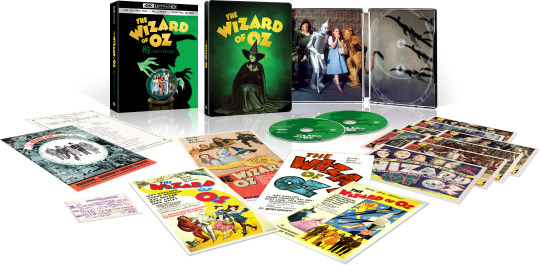
Special features:
The Wonderful Wizard of Oz: The Making of a Movie Classic
Prettier than Ever: The Restoration of Oz
Deleted Scenes/Behind the Scenes
Dorothy and her dog Toto are caught in a tornado's path and somehow end up in the land of Oz. Here she encounters some memorable friends and foes in her journey to meet the Wizard of Oz who everyone says can help her return home and possibly grant her new friends their goals of a brain, heart and courage.
Pre-order The Wizard of Oz.
#the wizard of oz#wizard of oz#judy garland#margaret hamilton#victor fleming#steelbook#dvd#gift#l. frank baum#l frank baum#frank morgan#ray bolger#bert lahr#jack haley#billie burke
16 notes
·
View notes
Text
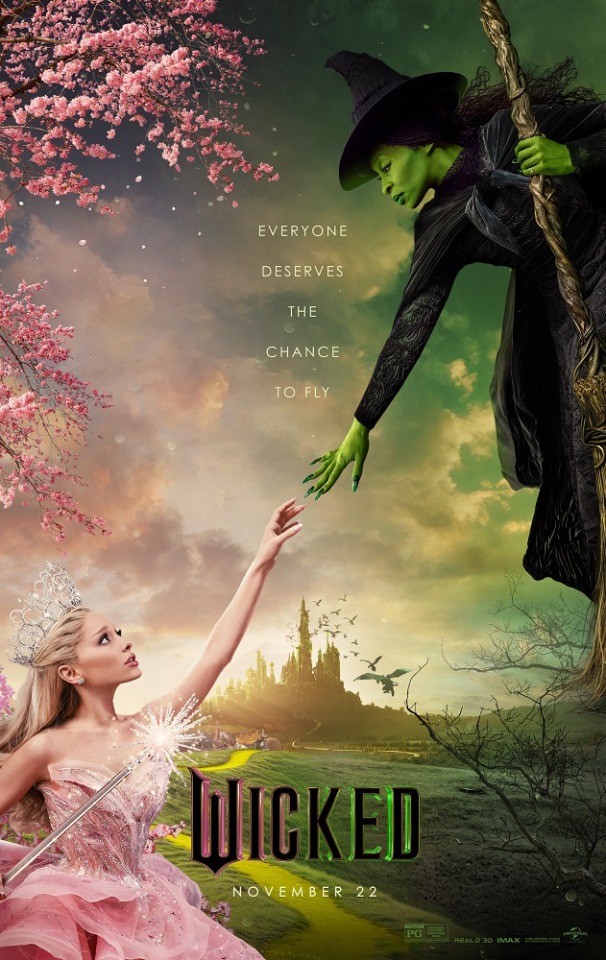
WICKED (2024)
Starring Cynthia Erivo, Ariana Grande, Jonathan Bailey, Marissa Bode, Ethan Slater, Michelle Yeoh, Jeff Goldblum, Keala Settle, Bronwyn James, Bowen Yang, Aaron Teoh, Guan Ti, Adam James, Colin Michael Carmichael and the voice of Peter Dinklage.
Screenplay by Winnie Holzman and Dana Fox.
Directed by Jon M. Chu.
Distributed by Universal Pictures. 160 minutes. Rated PG.
Have you ever wondered what came before Dorothy and the yellow brick road? Wicked answers all of these questions and more in the most spellbinding fashion. Jon M. Chu’s long-awaited film adaptation of Winnie Holzman and Stephen Schwartz’s hit Broadway musical, Wicked, gives audiences an inside look into how Elphaba Thropp became known as the Wicked Witch of the West, and how Galinda Upland became Glinda the Good Witch.
For those who don’t already know, Wicked is the musical prequel to L. Frank Baum’s 1900 novel The Wonderful Wizard of Oz (my fellow musical theater geeks know that Elphaba’s name is derived from Baum’s initials). Baum’s novel took the world by fire and earned its very first film adaptation in 1939, The Wizard of Oz, starring Judy Garland, Jack Haley, Ray Bolger, Bert Lahr, Frank Morgan, Margaret Hamilton, Billie Burke, and Clara Blandick. Unsurprisingly, the film quickly became a cult classic which led to numerous sequels, retellings, and, you guessed it, prequels.
In 1995, Gregory Maguire’s novel Wicked: The Life and Times of the Wicked Witch of the West was published, a prequel to Baum’s award-winning tale. The novel tells the previously untold story of how Elphaba and Glinda’s complicated relationship came to be, exploring themes of Good vs. Evil, Identity, Discrimination, and Friendship. With the success of Maguire’s novel, further conversation sparked about translating the story into a musical.
In 2003, Wicked made its Broadway debut at the Gershwin Theatre with music and lyrics composed by Stephen Schwartz and script by Winnie Holzman. The award-winning original cast featured Idina Menzel as Elphaba and Kristin Chenoweth as Glinda, making the pair household names.
Being lucky enough to have seen Wicked twice on Broadway, I, as well as other theater enthusiasts, had extremely elevated expectations for its highly anticipated film adaptation. Recent movie musicals have let me down, so I was curious how Wicked would fall on my wickedly misguided to thrillifying rating scale.
Needless to say, my expectations were defied.
The film begins exactly as its musical counterpart does, picking right up where The Wizard of Oz film left off, with the Munchkins of Munchkinland celebrating the melting (death) of the Wicked Witch of the West, belting opening number “No One Mourns the Wicked.” Glinda (formerly GA-linda) floats down in her iconic pink bubble to “rejoicify” with the Munchkins. Glinda’s sudden appearance prompts one of the Munchkins to ask Glinda if she was ever friends with the Wicked Witch, to which she responds that she was. Glinda then goes on to tell the origin story of the green witch (Elphaba,) and the trials that she endured as early as a newborn baby.
The story continues as Elphaba grows up and enrolls in Shiz University, with Galinda as her roommate. The duo become unlikely best friends, even after expressing that they equally “loathe” one another. Over the course of the girls’ first semester at Shiz, the talking animal professors of the university begin to lose their voices, reverting to their animalistic bleating, mooing, selves. As Elphaba has such a passion for the rights of all living things, she seeks out the help of the great and powerful Wizard of Oz to serve justice to the animals. Elphaba and Glinda make their way to the renowned Emerald City, not knowing that their adventure is just beginning.
I was concerned that Elphaba and Glinda’s characters would get lost in the mix of Wicked’s star-studded cast, but this was not the case at all. Cynthia Erivo and Ariana Grande transformed into the film’s iconic pair on the screen before me. Be prepared to see Erivo and Grande as you’ve never seen them before – their chemistry and talent are unmatched. Wicked is a true masterpiece and Erivo and Grande are coming for those Oscars.
Between Jonathan Bailey’s charisma playing Fiero, Michelle Yeoh’s mesmerism as Madame Morrible, and Jeff Goldblum’s allure as the Wizard, every single person in this cast carried their weight and more.
Alongside the incredibly brilliant cast, Wicked’s cinematography is another massive contributor to its success, in my book. The film is jam-packed with breathtaking landscapes including Munchkinland’s radiant tulip field (including nine million real planted tulips,) the effulgent Emerald City (which was actually a physical set,) and the ethereal Shiz University, complete with its very own lake and stone academic buildings (surprise – another physical set.) Aside from the sets, the vibrancy of every shot in the film is unrivaled.
Regarding the film’s musical aspect, I am still speechless, even after departing the theater. Not only can this cast act, but they can sing. Beautifully. It is rare for a film adaptation of a musical to hit the mark with its soundtrack, but Wicked did much more than hit the mark, it smashed it with a giant broomstick.
Stephen Schwartz, who wrote the entirety of Wicked’s original songs, co-wrote the film’s musical score alongside John Powell. The scoring evoked such emotion and tied the whole feature together with a pink and green bow.
After watching Wicked, I can confirm that pink does go“good” with green.
Kayla Marra
Copyright ©2024 PopEntertainment.com. All rights reserved. Posted: November 20, 2024.
youtube
5 notes
·
View notes
Text
Requests for Writing and Artwork
Anonymous welcome!
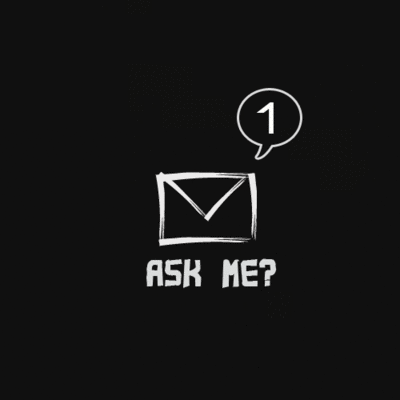
Note: I write about how the characters interact with the world and each other. I focus on the characters, not necessarily the conflict unless it is interfering in their relationship or stopping them from being around each other. It’s all about the people.
Word count: 1,000 minimum
Rating: Any
Types: NSFW or SFW
Kinks: Yes (it’s easier to say what I WON’T do—No Vore except blood drinking, No necrophilia unless sex with vampire—they gotta be able to consent, No Incest, No pee, no poo)
Tropes: meet cute, meet ugly, fluff, angst, friends to lovers, boss/employee, polyamory, **a/b/o**, kid fic, parent-focused fic, mpreg, apocalypse, damsel in distress (rescue), canon divergent, sex worker/prostitute/stripper, interspecies relationship, imbalanced power dynamics, love at first sight, hurt/comfort, shifter/skinwalker, roommate to lovers, or ask.
There are a handful or two of tropes I’m not ok with, so please select at least **3** options.
Plot or premise: please feel free to give me your prompt in as much detail or as little as you’d like.
Pairings: Any from the acceptable characters. Polyamory is acceptable too.
—-
Reader insert: If you select Reader as a character, please advise the POV, such as first person (I am), second person (you are), or third person (she, they, he, them).
—-
Acceptable Characters:
Reader—male or female, LGBT+, Chronic Illness, Mental Health, Winchester sibling or nibling, supernatural being, MoL Legacy, Rowena’s child, love interest to Team Free Will, Hunter, psychic, witch, etc. (Just ask)
Moon Knight system (Jake, Steven, Marc; Moon Knight)
Khonshu (Moon Knight)
Beau Arlen (Blue Sky)
Alec McDowell (Dark Angel)
Soldier Boy (The Boys)
Dean Winchester (No Incest;Demon, Possessed, Etc)
Sam Winchester (No Incest; Samifer, Lawyer, Professor, etc)
John Winchester (good parent, yes! No incest)
Mary Winchester (good parent, hunter, yes! No incest)
Castiel/Jimmy Novak (Wings, yes! True form, yes! Unrelated, yes! No Twincest)
Arthur Ketch
Gadreel
Emma Winchester
Charlie Bradbury
Gilda (Fairy)
Dorothy Baum
Billie (Reaper, yes! Death, yes!)
Death (YES!)
Lucifer/Nick (Wings, yes!)
Gabriel (Wings,yes!)
Balthazar (Wings, yes!)
Bobby Singer
Rufus Turner
Ellen Harvelle
Jo Harvelle
Jody Mills, Sheriff
Donna Hanscum, Sheriff
Claire Novak
Kaia Novak
Annie/Alex
Patience Turner
The Barnes Twins (no incest)
Missouri Moseley
Rowena MacLeod (Witchy, yes!)
Crowley/Fergus MacLeod (Demon form, yes)
Pamela Barnes
Adam Milligan
Michael (Archangel)
Horseman Death (portrayed by Julian Richings)
Meg 2.0
Jack Kline
Demons
Angels
Gods/Goddesses
#request ask anon welcome#supernatural#spn#moon knight#soldier boy the boys#dark Angel#Beau arlen#big Sky#castiel#dean winchester#sam winchester#destiel#deancas#casdean#Sabriel#Gabriel#Lucifer#Michael#Jack kline#Crowley Fergus Macleod#Charlie Bradbury#jody mills#jensen ackles#RPFs#alec mcdowell#reader insert#saileen#eileen leahy#Jo Harvelle#Bobby Singer
9 notes
·
View notes
Text
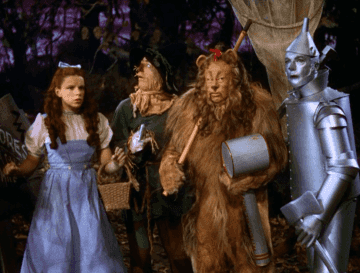


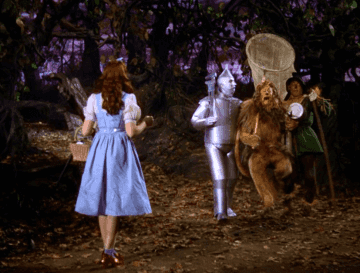
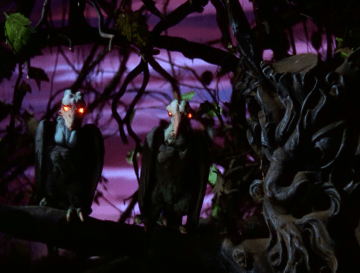
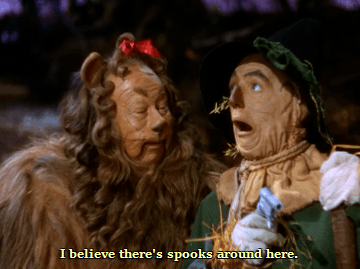




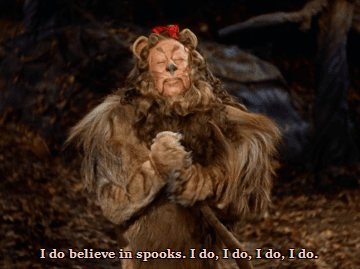
The Wizard of Oz (1939)
#the wizard of oz gif#bert lahr#ray bolger#jack haley#judy garland#cowardly lion#the scarecrow#tin man#dorothy gale#spooks#victor fleming#30s musicals#30s fantasy movies#30s movies#l. frank baum#1930s#1939
479 notes
·
View notes
Text
so many.
Fine, I guess I will compile literally all of them.
_____
the Famous Oz Books
By L. Frank Baum:
The Wizard of Oz
The Land of Oz
Ozma of Oz
Dorothy and the Wizard in Oz
The Road to Oz
The Emerald City of Oz
The Patchwork Girl of Oz
Tik-tok of Oz
The Scarecrow of Oz
Rinkitink in Oz
The Lost Princess of Oz
The Tin Woodman of Oz
The Magic of Oz
Glinda of Oz
By Ruth Plumly Thompson:
The Royal Book of Oz
Kabumpo in Oz
The Cowardly Lion of Oz
Grampa in Oz
The Lost King of Oz
The Hungry Tiger of Oz
The Gnome King of Oz
The Giant Horse of Oz
Jack Pumpkinhead of Oz
The Yellow Knight of Oz
Pirates in Oz
The Purple Prince of Oz
Ojo in Oz
Speedy in Oz
The Wishing Horse of Oz
Captain Salt in Oz
Handy Mandy in Oz
The Silver Princess in Oz
Ozoplaning With the Wizard of Oz
By John R. Neill:
The Wonder City of Oz
Scalawagons of Oz
Lucky Bucky in Oz
By Jack Snow:
The Magical Mimics in Oz
The Shaggy Man of Oz
By Rachel R. Cosgrove:
The Hidden Valley of Oz
By Eloise Jarvis Mcgraw & Lauren Mcgraw Wagner:
Merry Go Round in Oz
2 notes
·
View notes
Text






Here's what I wrote about Journey Back to Oz on Letterboxd:
Wow, I cannot believe I didn't know this existed until my current Wicked fever. It kind of gives me Grease 2 vibes; it's a very fun musical all on its own but it never even had a chance to live up to the film it's a sequel to.
Like Return to Oz, this story also mixes elements from the second and third L. Frank Baum novels, which I find very fun. Paul Lynde as Jack Punpkinhead and Liza as Dorothy were both excellent voice acting performances.
#grease 2#grease#return to oz#journey back to oz#oz#oz books#the wizard of oz#wizard of oz#the wonderful wizard of oz#wonderful wizard of oz#l. frank baum#l frank baum#paul lynde#majokko adjacent#liza minnelli
6 notes
·
View notes